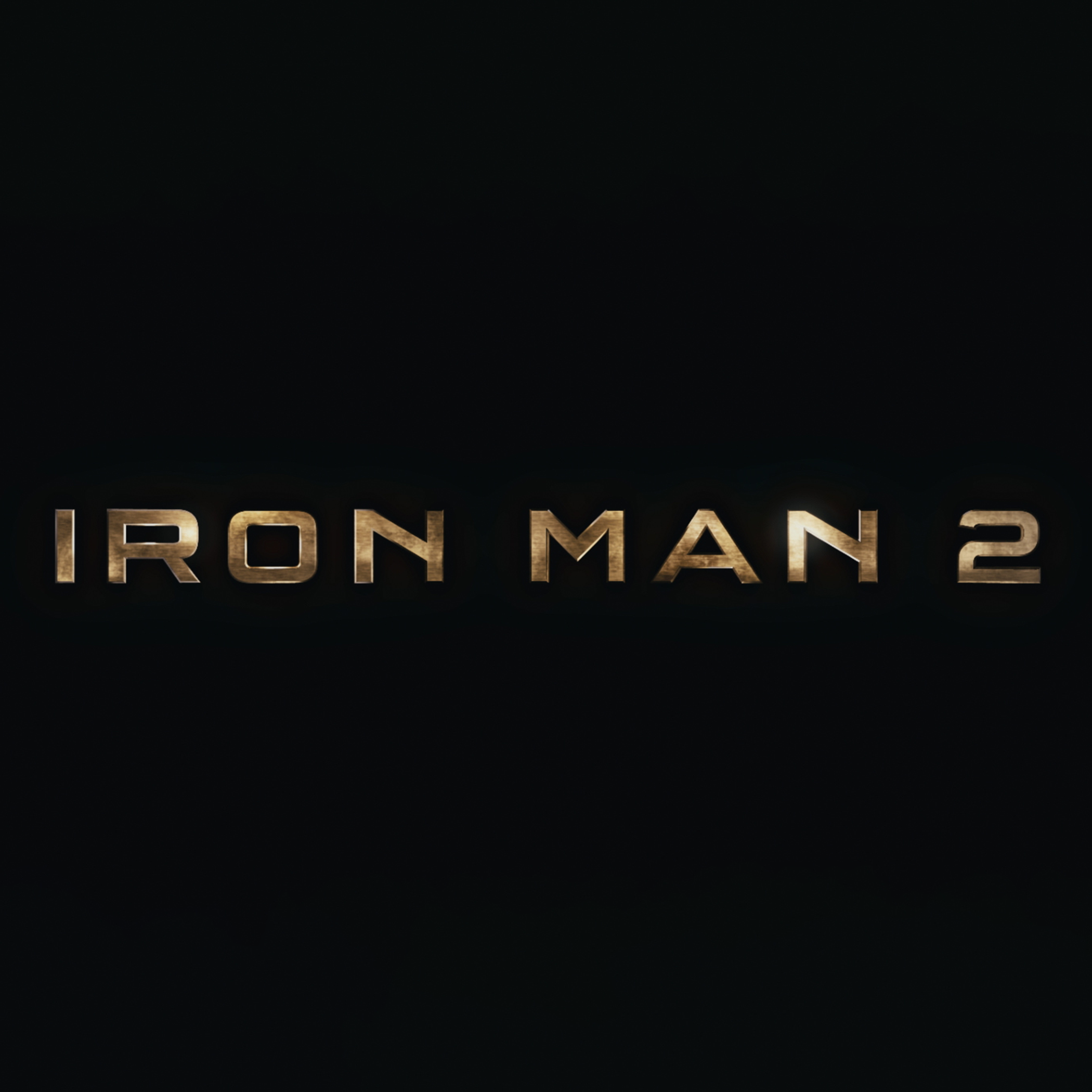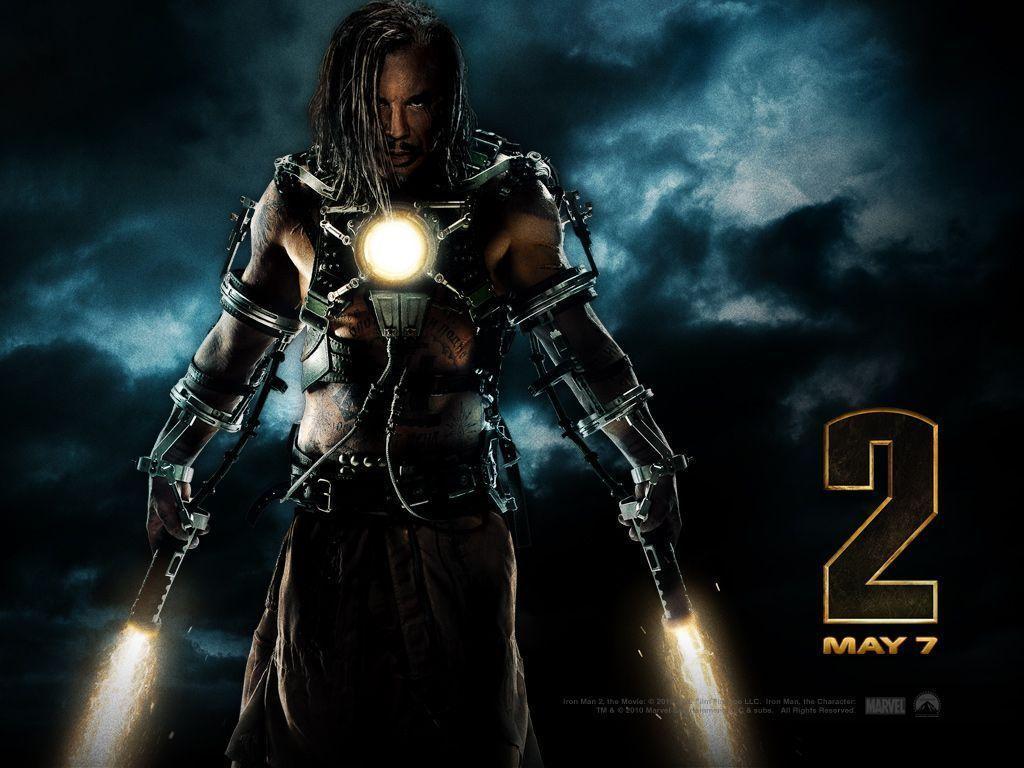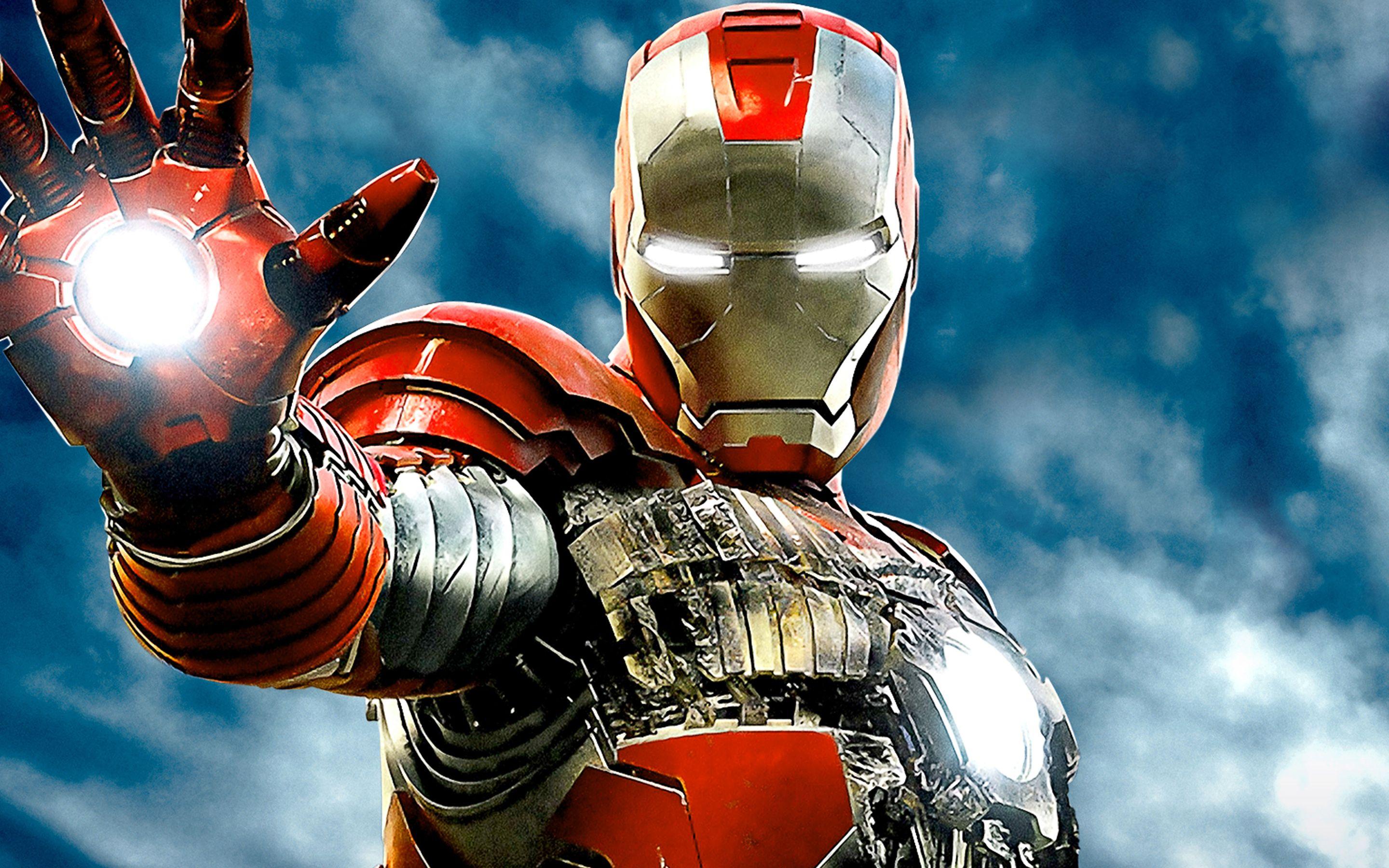Exploring The Casting Iron Man 2: Who Brought The Heroes To Life?
Picking the right people for movie roles is, you know, a very big deal. It shapes how we feel about characters and, too it's almost, how a whole story comes across. For a film like Iron Man 2, where characters are already so well-known from comic books, getting the perfect actors was really important. The choices made for this movie, in some respects, truly defined its feel.
When we think about Iron Man 2, our minds probably go straight to Tony Stark's smart remarks or the exciting action scenes. But, that is that, a lot of what makes those moments memorable comes down to the performers. Their ability to step into these parts, to embody the spirit of the characters, makes all the difference.
This idea of "casting" is interesting, actually. It is not just about choosing someone; it is about finding someone who can, in a way, become another type of being for a little while. We will look at who got the call for Iron Man 2 and, too, think about what "casting" truly means, even in a broader sense.
Table of Contents
- The Art of Casting: More Than Just Picking Names
- The Core Ensemble: Who Played Who in Iron Man 2?
- Robert Downey Jr. as Tony Stark
- Gwyneth Paltrow as Pepper Potts
- Don Cheadle Stepping In as Rhodey
- Scarlett Johansson's Debut as Black Widow
- Sam Rockwell as Justin Hammer
- Mickey Rourke as Whiplash
- Behind the Scenes: The Casting Process
- The Concept of "Casting" in a Different Light
- "Casting" Versus "Converting": A Technical View
- Type Conversion in Action: From Code to Character
- Why This Matters for Storytelling
- Impact and Legacy of the Iron Man 2 Cast
- Frequently Asked Questions About Iron Man 2 Casting
The Art of Casting: More Than Just Picking Names
The job of casting a movie is a lot more involved than just picking popular names, you know. It is about finding individuals who can truly bring a written character to life on screen. This means looking at their past work, their natural mannerisms, and how they might fit with other actors. It is, in a way, a very careful balancing act.
For a movie like Iron Man 2, which was a sequel, some roles were already set. But, for new characters, the process was wide open. The casting director and the film's makers had to imagine who could best embody these new personalities. This kind of work is, you know, quite a creative challenge.
The choices made during casting can make or break a film, honestly. If an actor does not quite fit the part, it can feel a bit off to the audience. But, when it clicks, it feels completely natural, as if no one else could have played that part. That is the real magic of good casting, in fact.
The Core Ensemble: Who Played Who in Iron Man 2?
The group of actors in Iron Man 2 was a very strong one, bringing back some familiar faces and introducing some new ones. Each person had a job to do, and they did it, you know, pretty well. Let us look at the main players who shaped this part of Tony Stark's story.
Robert Downey Jr. as Tony Stark
Robert Downey Jr. came back as Tony Stark, and, honestly, it is hard to imagine anyone else in that role. He really had a way of making Tony seem smart, funny, and also a little bit troubled. His performance was, you know, very much the heart of the movie.
His ability to deliver snappy lines and show deeper feelings made Tony Stark a character people truly cared about. He had, you know, already set the standard in the first Iron Man film. So, bringing him back was an obvious choice, basically.
This actor's portrayal helped cement Tony Stark as a fan favorite, too. He made the character feel, in a way, very real and relatable, despite all the superhero stuff. It was a role he seemed, you know, almost born to play.
Gwyneth Paltrow as Pepper Potts
Gwyneth Paltrow returned as Pepper Potts, Tony's very capable assistant and, later, his love interest. She brought a very grounded presence to the film. Pepper was the one who could, you know, keep Tony in line when he got too wild.
Her character provided a nice balance to Tony's sometimes chaotic nature. She was smart and strong, and, in some respects, she was the anchor for Tony. Her interactions with Robert Downey Jr. felt, you know, very natural and believable.
The way she played Pepper showed a woman who was not afraid to stand up to Tony, but also cared about him deeply. This relationship was, you know, a very important part of the story. She really made Pepper a memorable character.
Don Cheadle Stepping In as Rhodey
A notable change for Iron Man 2 was Don Cheadle taking over the role of Lt. James "Rhodey" Rhodes. Terrence Howard had played the part in the first movie, but, you know, Don Cheadle stepped in for the sequel. This kind of change can be tricky for audiences.
Don Cheadle brought his own style to the character. He portrayed Rhodey as a very loyal friend to Tony, but also someone who was a bit more by the book. He had to, you know, make the role his own while still fitting into the established story.
His performance helped Rhodey become War Machine, a very important ally for Iron Man. It showed his ability to adapt to an existing character and, you know, make it work. Fans generally accepted his take on the role, which is, honestly, a big success for recasting.
Scarlett Johansson's Debut as Black Widow
Iron Man 2 also introduced Scarlett Johansson as Natalie Rushman, who we later find out is Natasha Romanoff, or Black Widow. Her appearance was, you know, a very exciting addition to the cast. She brought a mysterious and capable energy to the screen.
Her character was very skilled and, in a way, quite dangerous. She handled action scenes very well and also showed a subtle intelligence. This role was, you know, her first time playing Black Widow in the Marvel movies.
Scarlett Johansson's portrayal set the stage for Black Widow to become a very central figure in later films. She made the character feel, you know, very intriguing and powerful from her very first scenes. It was a casting choice that really paid off, honestly.
Sam Rockwell as Justin Hammer
Sam Rockwell played Justin Hammer, a rival weapons maker to Tony Stark. He brought a very unique and somewhat awkward energy to the villain role. Hammer was, you know, trying to be like Tony but just could not quite pull it off.
Rockwell's performance made Hammer a very memorable character, even though he was not the main bad guy. He was, you know, often funny in his attempts to be cool and powerful. This kind of character adds a lot of flavor to the story.
His portrayal showed a villain who was, in a way, more pathetic than truly evil, which was a nice contrast to other antagonists. It was, you know, a very good example of an actor making a secondary role stand out.
Mickey Rourke as Whiplash
Mickey Rourke took on the role of Ivan Vanko, also known as Whiplash, the main antagonist. He brought a very intense and brooding presence to the character. Vanko was, you know, driven by a deep desire for revenge against the Stark family.
Rourke's look and mannerisms made Whiplash feel very menacing and, in a way, quite unpredictable. He showed a character who was very focused on his goal, no matter the cost. His performance was, you know, quite impactful.
The actor made Whiplash a very compelling foe for Iron Man. He conveyed the character's bitterness and brilliance, which, honestly, made for some very good conflict. It was, you know, a very strong performance for the main villain.
Behind the Scenes: The Casting Process
The process of casting a big movie involves many steps, you know. It is not just about calling up famous actors. There are auditions, meetings, and a lot of discussion among the film's creative team. It is, in a way, a very collaborative effort.
The goal is always to find the best fit for each part, someone who can truly bring the script to life. This means looking beyond just a person's fame and focusing on their acting ability and how they connect with the character. That is, you know, really important.
Sometimes, a director has a very clear idea of who they want. Other times, they might see many different actors before making a decision. It is a very careful and considered process, honestly, because the stakes are high.
The Director's Vision
The director, Jon Favreau for Iron Man 2, has a very strong say in who gets cast. They have a vision for the film and for how each character should be portrayed. This vision guides the entire casting process, you know.
They work closely with the casting director to narrow down the choices and to ensure that the chosen actors fit into the overall tone of the movie. It is, in a way, about making sure all the pieces fit together. Their artistic view is, you know, quite central.
The director's understanding of the story and its characters is, you know, very key. They need to imagine how each actor will contribute to the film's narrative and emotional impact. This is where, honestly, a lot of the magic begins.
Chemistry Reads and Screen Tests
For many roles, especially those that interact a lot, actors will do "chemistry reads." This means they will perform scenes together to see if they have a natural connection. This is, you know, very important for on-screen relationships.
Screen tests are also common. Actors will perform a scene on camera, sometimes in costume, to see how they look and sound in the role. This helps the filmmakers visualize the performance more clearly. It is, in a way, a final check.
These steps help ensure that the actors not only can play their individual parts well but also work well as a group. The dynamic between characters is, you know, very important for a movie's success. It is about building a believable world.
The Concept of "Casting" in a Different Light
The word "casting" itself can mean a few different things, you know. When we talk about movies, it is about selecting actors. But, in other areas, like in computer programming, "casting" has a very specific technical meaning that is, in a way, similar in its core idea of transformation.
My text mentions this very idea, explaining that "casting is the process of type conversion." It is, you know, a common thing in languages like Java. This is not about picking actors, but about treating one kind of data as if it were another kind, temporarily.
This distinction is, honestly, quite interesting when you think about it. It helps us understand the nuances of how things are perceived or used. The act of "casting" something implies a temporary change in how it is viewed or handled.
"Casting" Versus "Converting": A Technical View
My text makes a good point about "casting" versus "converting." It says, "Casting would mean that you want to temporarily treat one object as another type." This is like an actor, for a little while, treating themselves as the character. They do not permanently become the character, you know.
On the other hand, "converting would mean that you get a new list object." This would be like an actor completely changing who they are to become a new person permanently. Movie casting is more like the first idea, the temporary treatment, honestly.
The problem with true "casting" in the programming sense is when the original value is "out of the range that can be represented by a signed int." This is like an actor whose natural abilities are, in a way, outside the requirements of a specific role. If they are "in range, just assign it and you're done." If not, you get an "unspecified result," which, for a movie, would be a bad performance, you know.
Type Conversion in Action: From Code to Character
The concept of "type conversion" is, you know, very common in statically typed languages like Java. It is about making sure different kinds of information can work together. In a way, a director "casts" an actor, which is a form of type conversion. The actor, a general "person" type, is converted, or "cast," into a specific "character" type for the film.
My text also talks about `static_cast` in C++, used to "cast pointers to related types, for example casting void* to the appropriate type." This is like taking a general "performer" (a `void*` or a general actor) and specifically "casting" them to be a very particular character, like Tony Stark (the "appropriate type"). It is about giving a specific role to a general talent, honestly.
The idea of an `enum` from my text, like `Public enum question { role = 2, projectfunding = 3 }`, can be seen as a list of specific roles or types. When an actor is chosen, they are "cast" to one of these specific "role" types within the larger "questions" (or roles) class. It is about fitting a person into a very defined category for a purpose, you know.
Why This Matters for Storytelling
This deeper look at "casting" helps us appreciate the choices made for Iron Man 2. The filmmakers were not just picking names; they were, in a way, "casting" individuals into specific character "types" that needed to fit the story's "range." If the actor's range was out of sync with the character's needs, it would have been, you know, an "unspecified result" for the film.
When the "casting" works, the actor seamlessly embodies the character. Robert Downey Jr. was, you know, perfectly "cast" as Tony Stark because his abilities and personality fit the character's "range" so well. There was no need to "reduce it the right range first" or "assign it to a larger signed type," as my text suggests for out-of-range values. He just fit.
The success of Iron Man 2, and indeed many films, rests on this very precise "casting." It is about finding the right person to temporarily become that specific type of character, making the story feel authentic and engaging. It is, honestly, a very delicate balance.
Impact and Legacy of the Iron Man 2 Cast
The actors chosen for Iron Man 2 had a lasting impact, not just on this movie but on the entire Marvel story. Their performances helped build the foundation for many future films. It is, you know, quite a significant legacy.
Robert Downey Jr. continued to be the face of Iron Man for years, and Gwyneth Paltrow's Pepper Potts remained a very important figure. Don Cheadle made Rhodey his own, and Scarlett Johansson's Black Widow became a breakout star, getting her own movie much later. These choices were, you know, very far-reaching.
The film's cast, collectively, helped solidify the Marvel Cinematic Universe as a major force in cinema. Their portrayals made the characters feel very real to audiences, which, honestly, encouraged people to keep coming back for more stories. It was a very strong ensemble, basically.
Even the villains, like Sam Rockwell's Justin Hammer and Mickey Rourke's Whiplash, left their mark. They provided interesting challenges for Tony Stark and, in a way, expanded the world of Iron Man. The overall casting was, you know, very effective in building out this universe.
The way these actors worked together, the chemistry they shared, was a big part of the film's appeal. It showed that the casting process was, you know, very successful in bringing together a group that could truly make the story shine. Learn more about Marvel movies on our site, and link to this page about superhero films.
Frequently Asked Questions About Iron Man 2 Casting
People often have questions about who played what role in Iron Man 2 and why certain choices were made. Here are a few common questions that come up, you know, pretty often.
Who was originally cast as Rhodey in Iron Man?
The actor Terrence Howard played James "Rhodey" Rhodes in the first Iron Man movie. For Iron Man 2, the role was taken over by Don Cheadle. This change was, you know, a very noticeable one for fans of the series.
How old was Scarlett Johansson when she filmed Iron Man 2?
Scarlett Johansson was born in November 1984. Iron Man 2 was released on April 28, 2010. So, she would have been around 25 years old during the filming and release of the movie, you know, in that time frame.
Was Emily Blunt supposed to be Black Widow?
Yes, Emily Blunt was, you know, reportedly offered the role of Black Widow before Scarlett Johansson took it. However, scheduling conflicts with another film, Gulliver's Travels, meant she could not take the part. This kind of thing happens, you know, pretty often in Hollywood.

Iron Man 2 - Prologue

Iron Man 2 Wallpapers - Wallpaper Cave

Iron Man 2 Wallpapers - Top Free Iron Man 2 Backgrounds - WallpaperAccess